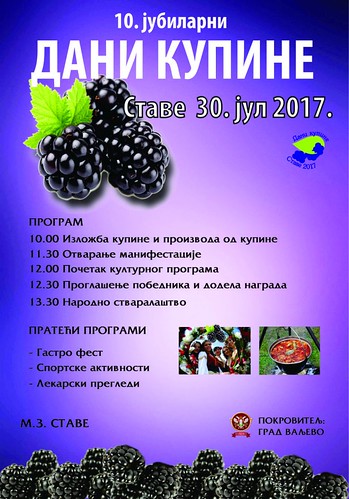Ngly, we found moreGenomic Aberration Patterns in GliomasTable 4. Selected genes involved in genomic aberration of gliomas.Gene NKAIN1 PTPRU SLC44A3 AASS ASB15 C7orf58 FEZF1 GPR37 HYAL4 ING3 IQUB LMOD2 NDUFA5 POT1 RNF133 RNF148 SPAM1 TAS2R16 TSPAN12 WASL VN1R2 VN1R4 ZNF507 Cucurbitacin I chemical information ZNFDescription Na+/K+ transporting ATPase interacting 1 Protein tyrosine phosphatase, receptor type, U Solute carrier family 44, member 3 Aminoadipate-semialdehyde synthase Ankyrin repeat and SOCS box-containing 15 chromosome 7 open reading frame 58 FEZ family zinc finger 1 G protein-coupled receptor 37 (endothelin receptor type B-like) Hyaluronoglucosaminidase 4 Inhibitor of growth family, member 3 IQ motif and ubiquitin domain containing Leiomodin 2 (cardiac) NADH dehydrogenase (ubiquinone) 1 alpha subcomplex, 5, 13 kDa POT1 protection of telomeres 1 homolog (S. pombe) Ring finger protein 133 Ring finger protein 148 Sperm adhesion molecule 1 Taste receptor, type 2, member 16 Tetraspanin 12 Wiskott-Aldrich syndrome-like Vomeronasal 1 receptor 2 Vomeronasal 1 receptor 4 Zinc finger protein 507 Zinc 15481974 finger proteinLocation 1p 1p 1p 7q 7q 7q 7q 7q 7q 7q 7q 7q 7q 7q 7q 7q 7q 7q 7q 7q 19q 19q 19q 19qTotal 6 6 6 6 6 6 6 6 6 6 6 6 6 6 6 6 6 6 6 6 6 6 6Gain 5 5 5 6 6 6 6 6 6 6 6 6 6 6 6 6 6 6 6 6 4 4 3Loss 1 1cnLOHLGG 4 4 4 2 2 2 2 2 2 2 2 2 2 2 2 2 2 2 2HGG 2 2 2 4 4 4 4 4 4 4 4 4 4 4 4 4 4 4 4 4 1 1 21 1 315 5doi:10.1371/journal.pone.0057168.tduplication events in LGG than in HGG. Taken together, we conjectured that losses and gains occur more often in HGG and LGG, respectively. Furthermore, we found that gains 1418741-86-2 usually occurred on 7q and 1p in HGG and LGG, respectively. Decreasing copy number is usually  discovered on 6q, 13q and 19q in HGG. We also noticed that there were overlaps between the two tumor grades in the cnLOH category, especially the fact that cnLOHs were spread out more broadly in cross-chromosome cytobanding than the rest of copy number variation categories.Pathway Enrichment and Functional Annotation of the Associated GenesTo decipher functional relevance of genes and gene classification related to gliomas, we established datasets based on the following two criteria: (i) elimination of genes shared by both the case and the control and (ii) removal of genes shared by less than four samples. Altogether, we collected 442 LGG and 111 HGG associated genes. After mapping the two groups of genes onto the KEGG pathways, we obtained 12 pathways for LGG, which belong to “lipid metabolism” (in the number of pathways: 6), “neurodegenerative diseases” (1), “endocrine system” (1), “nervous system” (1), “circulatory system” (1), “signal transduction” (1), and “immune system” (1) (Table 5). These genes were categorized in 10 pathways correlated to HGG, among which two were classified as “lipid metabolism” and others were distributed in diverse classifications such as “signaling molecules and interaction”, “signal transduction”, “endocrine system”, “carbohydrate metabolism”, “amino acid metabolism”, “glycan biosynthesis and metabolism”, and “infectious diseases”. The most four significant pathways identified in LGG are “arachidonic acid metabolism”, “linoleic acid metabolism”, “alpha-Linolenic acid metabolism”, and “ether lipid metabolism”. In HGG, the most four enriched terms are “metabolic pathways”, “neuroactive ligand-receptor interaction”, “calcium signaling pathway”, and “melanogenesis”. We found 12 and 4 enriched GO terms.Ngly, we found moreGenomic Aberration Patterns in GliomasTable 4. Selected genes involved in genomic aberration of gliomas.Gene NKAIN1 PTPRU SLC44A3 AASS ASB15 C7orf58 FEZF1 GPR37 HYAL4 ING3 IQUB LMOD2 NDUFA5 POT1 RNF133 RNF148 SPAM1 TAS2R16 TSPAN12 WASL VN1R2 VN1R4 ZNF507 ZNFDescription Na+/K+ transporting ATPase interacting 1 Protein tyrosine phosphatase, receptor type, U Solute carrier family 44, member 3 Aminoadipate-semialdehyde synthase Ankyrin repeat and SOCS box-containing 15 chromosome 7 open reading frame 58 FEZ family zinc finger 1 G protein-coupled receptor 37 (endothelin receptor type B-like) Hyaluronoglucosaminidase 4 Inhibitor of growth family, member 3 IQ motif and ubiquitin domain containing Leiomodin 2 (cardiac) NADH dehydrogenase (ubiquinone) 1 alpha subcomplex, 5, 13 kDa POT1 protection of telomeres 1 homolog (S. pombe) Ring finger protein 133 Ring finger protein 148 Sperm adhesion molecule 1 Taste receptor, type 2, member 16 Tetraspanin 12 Wiskott-Aldrich syndrome-like Vomeronasal 1 receptor 2 Vomeronasal 1 receptor 4 Zinc finger protein 507 Zinc 15481974 finger proteinLocation 1p 1p 1p 7q 7q 7q 7q 7q 7q 7q 7q 7q 7q 7q 7q 7q 7q 7q 7q 7q 19q 19q 19q 19qTotal 6 6 6 6 6 6 6 6 6 6 6 6 6 6 6 6 6 6 6 6 6 6 6Gain 5 5 5 6 6 6 6 6 6 6 6 6 6 6 6 6 6 6 6 6 4 4 3Loss 1 1cnLOHLGG 4 4 4 2 2 2 2 2 2 2 2 2 2 2 2 2 2 2 2HGG 2 2 2 4 4 4 4 4 4 4 4 4 4 4 4 4 4 4 4 4 1 1 21 1 315 5doi:10.1371/journal.pone.0057168.tduplication events in LGG than in HGG. Taken together, we conjectured that losses and gains occur more often in HGG and LGG, respectively. Furthermore, we found that gains usually occurred on 7q and 1p in HGG and LGG, respectively. Decreasing copy number is
discovered on 6q, 13q and 19q in HGG. We also noticed that there were overlaps between the two tumor grades in the cnLOH category, especially the fact that cnLOHs were spread out more broadly in cross-chromosome cytobanding than the rest of copy number variation categories.Pathway Enrichment and Functional Annotation of the Associated GenesTo decipher functional relevance of genes and gene classification related to gliomas, we established datasets based on the following two criteria: (i) elimination of genes shared by both the case and the control and (ii) removal of genes shared by less than four samples. Altogether, we collected 442 LGG and 111 HGG associated genes. After mapping the two groups of genes onto the KEGG pathways, we obtained 12 pathways for LGG, which belong to “lipid metabolism” (in the number of pathways: 6), “neurodegenerative diseases” (1), “endocrine system” (1), “nervous system” (1), “circulatory system” (1), “signal transduction” (1), and “immune system” (1) (Table 5). These genes were categorized in 10 pathways correlated to HGG, among which two were classified as “lipid metabolism” and others were distributed in diverse classifications such as “signaling molecules and interaction”, “signal transduction”, “endocrine system”, “carbohydrate metabolism”, “amino acid metabolism”, “glycan biosynthesis and metabolism”, and “infectious diseases”. The most four significant pathways identified in LGG are “arachidonic acid metabolism”, “linoleic acid metabolism”, “alpha-Linolenic acid metabolism”, and “ether lipid metabolism”. In HGG, the most four enriched terms are “metabolic pathways”, “neuroactive ligand-receptor interaction”, “calcium signaling pathway”, and “melanogenesis”. We found 12 and 4 enriched GO terms.Ngly, we found moreGenomic Aberration Patterns in GliomasTable 4. Selected genes involved in genomic aberration of gliomas.Gene NKAIN1 PTPRU SLC44A3 AASS ASB15 C7orf58 FEZF1 GPR37 HYAL4 ING3 IQUB LMOD2 NDUFA5 POT1 RNF133 RNF148 SPAM1 TAS2R16 TSPAN12 WASL VN1R2 VN1R4 ZNF507 ZNFDescription Na+/K+ transporting ATPase interacting 1 Protein tyrosine phosphatase, receptor type, U Solute carrier family 44, member 3 Aminoadipate-semialdehyde synthase Ankyrin repeat and SOCS box-containing 15 chromosome 7 open reading frame 58 FEZ family zinc finger 1 G protein-coupled receptor 37 (endothelin receptor type B-like) Hyaluronoglucosaminidase 4 Inhibitor of growth family, member 3 IQ motif and ubiquitin domain containing Leiomodin 2 (cardiac) NADH dehydrogenase (ubiquinone) 1 alpha subcomplex, 5, 13 kDa POT1 protection of telomeres 1 homolog (S. pombe) Ring finger protein 133 Ring finger protein 148 Sperm adhesion molecule 1 Taste receptor, type 2, member 16 Tetraspanin 12 Wiskott-Aldrich syndrome-like Vomeronasal 1 receptor 2 Vomeronasal 1 receptor 4 Zinc finger protein 507 Zinc 15481974 finger proteinLocation 1p 1p 1p 7q 7q 7q 7q 7q 7q 7q 7q 7q 7q 7q 7q 7q 7q 7q 7q 7q 19q 19q 19q 19qTotal 6 6 6 6 6 6 6 6 6 6 6 6 6 6 6 6 6 6 6 6 6 6 6Gain 5 5 5 6 6 6 6 6 6 6 6 6 6 6 6 6 6 6 6 6 4 4 3Loss 1 1cnLOHLGG 4 4 4 2 2 2 2 2 2 2 2 2 2 2 2 2 2 2 2HGG 2 2 2 4 4 4 4 4 4 4 4 4 4 4 4 4 4 4 4 4 1 1 21 1 315 5doi:10.1371/journal.pone.0057168.tduplication events in LGG than in HGG. Taken together, we conjectured that losses and gains occur more often in HGG and LGG, respectively. Furthermore, we found that gains usually occurred on 7q and 1p in HGG and LGG, respectively. Decreasing copy number is  usually discovered on 6q, 13q and 19q in HGG. We also noticed that there were overlaps between the two tumor grades in the cnLOH category, especially the fact that cnLOHs were spread out more broadly in cross-chromosome cytobanding than the rest of copy number variation categories.Pathway Enrichment and Functional Annotation of the Associated GenesTo decipher functional relevance of genes and gene classification related to gliomas, we established datasets based on the following two criteria: (i) elimination of genes shared by both the case and the control and (ii) removal of genes shared by less than four samples. Altogether, we collected 442 LGG and 111 HGG associated genes. After mapping the two groups of genes onto the KEGG pathways, we obtained 12 pathways for LGG, which belong to “lipid metabolism” (in the number of pathways: 6), “neurodegenerative diseases” (1), “endocrine system” (1), “nervous system” (1), “circulatory system” (1), “signal transduction” (1), and “immune system” (1) (Table 5). These genes were categorized in 10 pathways correlated to HGG, among which two were classified as “lipid metabolism” and others were distributed in diverse classifications such as “signaling molecules and interaction”, “signal transduction”, “endocrine system”, “carbohydrate metabolism”, “amino acid metabolism”, “glycan biosynthesis and metabolism”, and “infectious diseases”. The most four significant pathways identified in LGG are “arachidonic acid metabolism”, “linoleic acid metabolism”, “alpha-Linolenic acid metabolism”, and “ether lipid metabolism”. In HGG, the most four enriched terms are “metabolic pathways”, “neuroactive ligand-receptor interaction”, “calcium signaling pathway”, and “melanogenesis”. We found 12 and 4 enriched GO terms.
usually discovered on 6q, 13q and 19q in HGG. We also noticed that there were overlaps between the two tumor grades in the cnLOH category, especially the fact that cnLOHs were spread out more broadly in cross-chromosome cytobanding than the rest of copy number variation categories.Pathway Enrichment and Functional Annotation of the Associated GenesTo decipher functional relevance of genes and gene classification related to gliomas, we established datasets based on the following two criteria: (i) elimination of genes shared by both the case and the control and (ii) removal of genes shared by less than four samples. Altogether, we collected 442 LGG and 111 HGG associated genes. After mapping the two groups of genes onto the KEGG pathways, we obtained 12 pathways for LGG, which belong to “lipid metabolism” (in the number of pathways: 6), “neurodegenerative diseases” (1), “endocrine system” (1), “nervous system” (1), “circulatory system” (1), “signal transduction” (1), and “immune system” (1) (Table 5). These genes were categorized in 10 pathways correlated to HGG, among which two were classified as “lipid metabolism” and others were distributed in diverse classifications such as “signaling molecules and interaction”, “signal transduction”, “endocrine system”, “carbohydrate metabolism”, “amino acid metabolism”, “glycan biosynthesis and metabolism”, and “infectious diseases”. The most four significant pathways identified in LGG are “arachidonic acid metabolism”, “linoleic acid metabolism”, “alpha-Linolenic acid metabolism”, and “ether lipid metabolism”. In HGG, the most four enriched terms are “metabolic pathways”, “neuroactive ligand-receptor interaction”, “calcium signaling pathway”, and “melanogenesis”. We found 12 and 4 enriched GO terms.